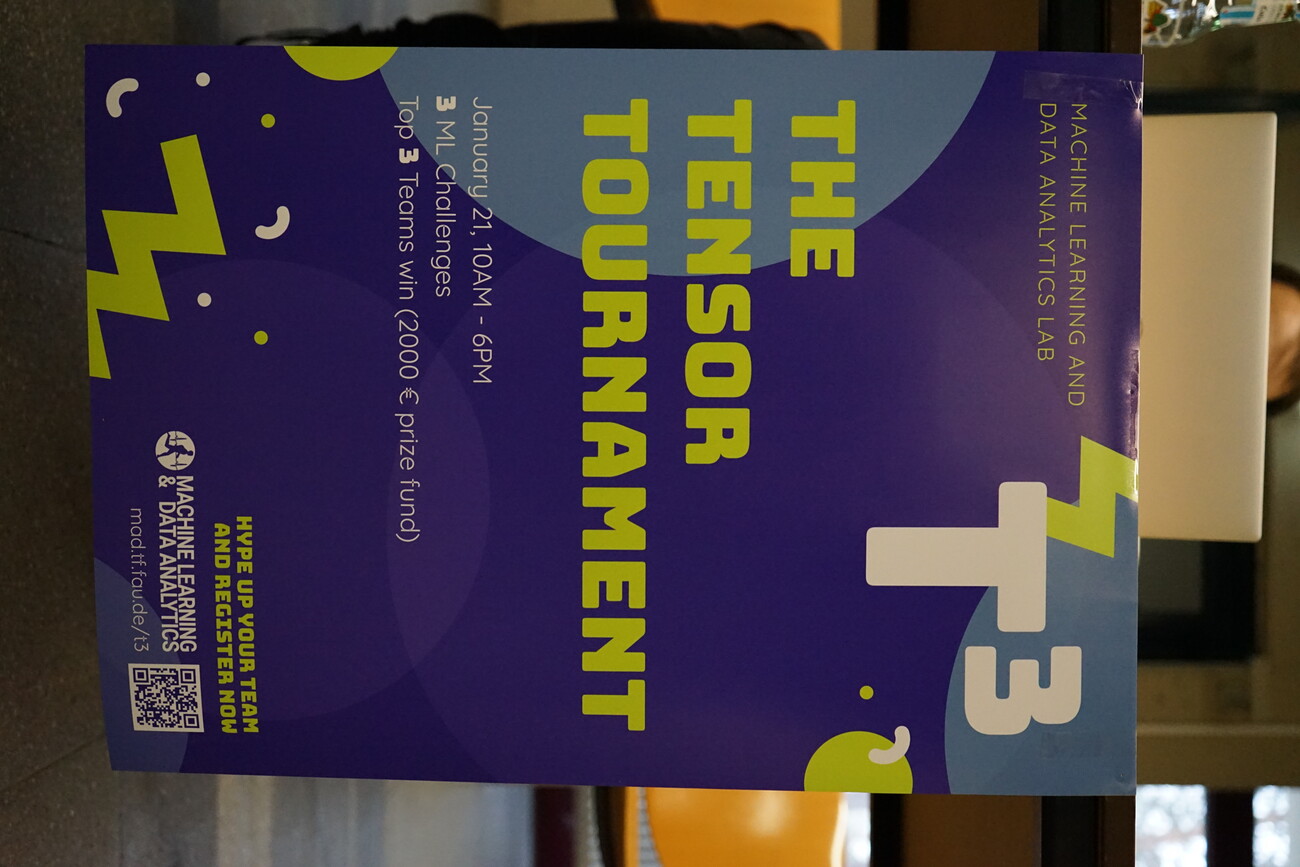The Tensor Tournament 2023
Hackathon at FAU - organized by Machine Learning and Data Analytics Lab
03.02.2023
Recently, I had the opportunity to participate in The Tensor Tournament Hackathon (organized by the Machine Learning and Data Analytics Lab at FAU) and I am happy to announce that our team, Maximilian Kasper and me, emerged as the winners! The hackathon was a six-hour event where teams were given three machine learning and deep learning problems to solve. It was an intense and challenging experience, but it was incredibly rewarding to put our skills to the test and come out on top.
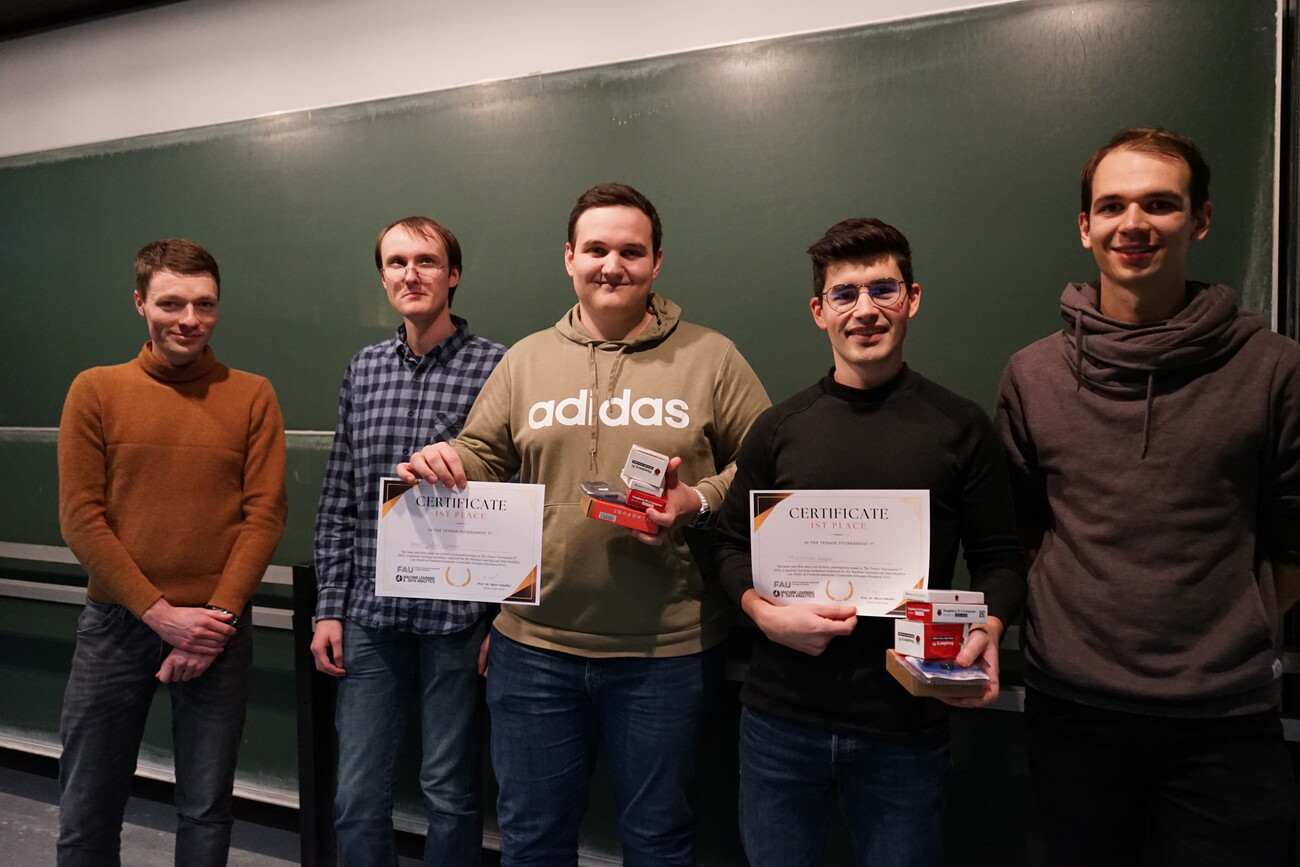
First Problem: The Gingerbread Chef
The first problem we were given was to build a machine learning model that could accurately predict the quality of gingerbread on a scale of 0 (garbage) to 4 (delicious) based on the ingredients. This required us to use regression or classification models. After trying several models we ended up using a simple regression model. Our scores were good but not as good as we'd like, so we decided to try a rather unconventional approach by leveraging the AutoML package AutoGluon to automatically train and evaluate lots of models with various hyperparameters. In the end, the model produced by AutoGluon was better than any of the other submissions. It seems that simple problems become less relevant as automatic modeling gets better.
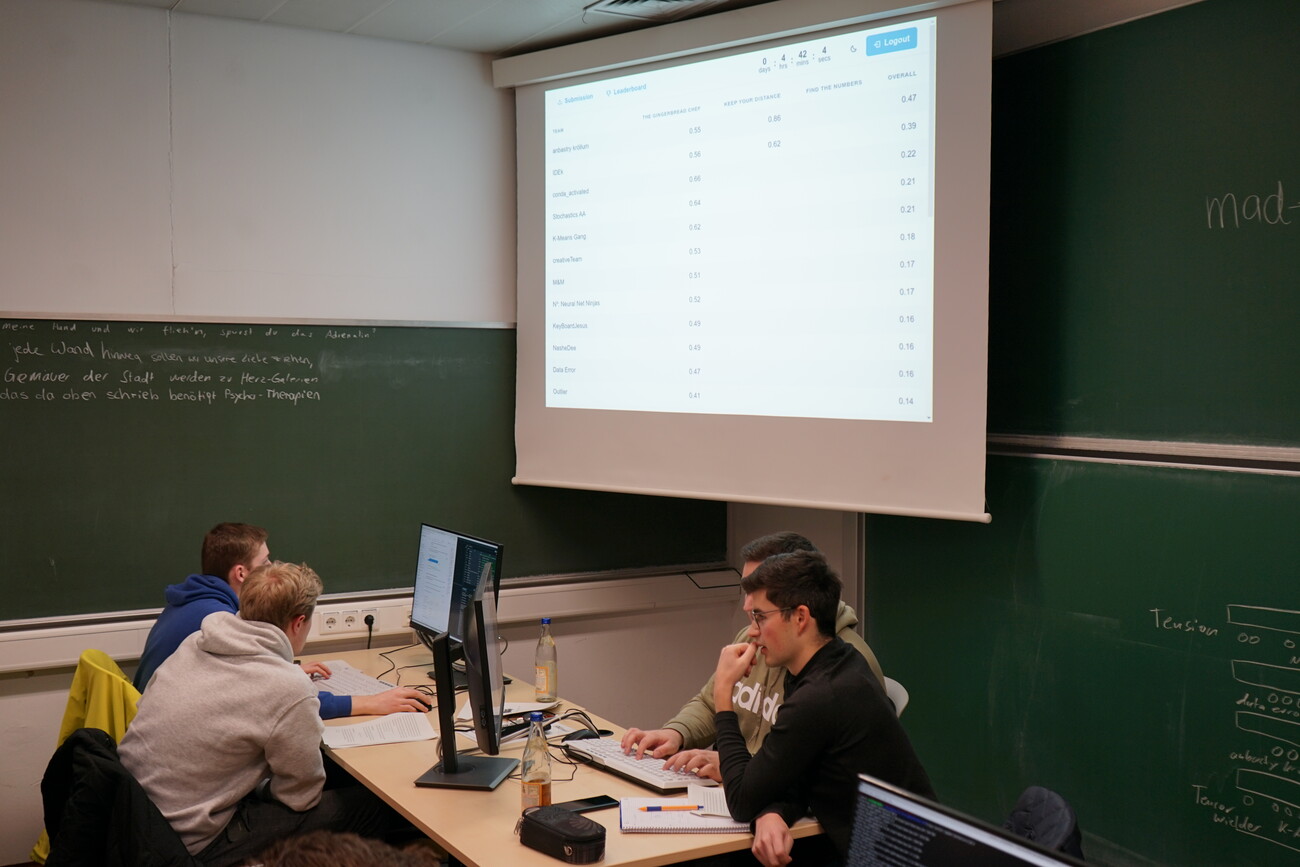
Second Problem: Keep Your Distance
Adaptive cruise control is a driver assist feature that automatically keeps a set distance to the car in front, or maintains the set speed if there is none. The correct estimation of the distance between yourself and other vehicles is thus paramount. Instead of costly radar or lidar sensors you intend to use a simple video camera for that purpose.
A total of 1074 images with 1442 vehicles were annotated with bounding boxes around the cars and the measured distance to the car.
The goal of this problem was to predict the distance from the given images and bounding boxes for each vehicle. To get a good first baseline we decided to only use the tabular annotation data and leave the images for a later model. To our surprise, after some feature engineering, a simple RandomForest regressor evaluated to a score of 0.95 on the test set. We suspect that the features "area of bounding box" and "angle to camera" were sufficient to explain the distance. Especially the area has a direct causal relationship with the distance.
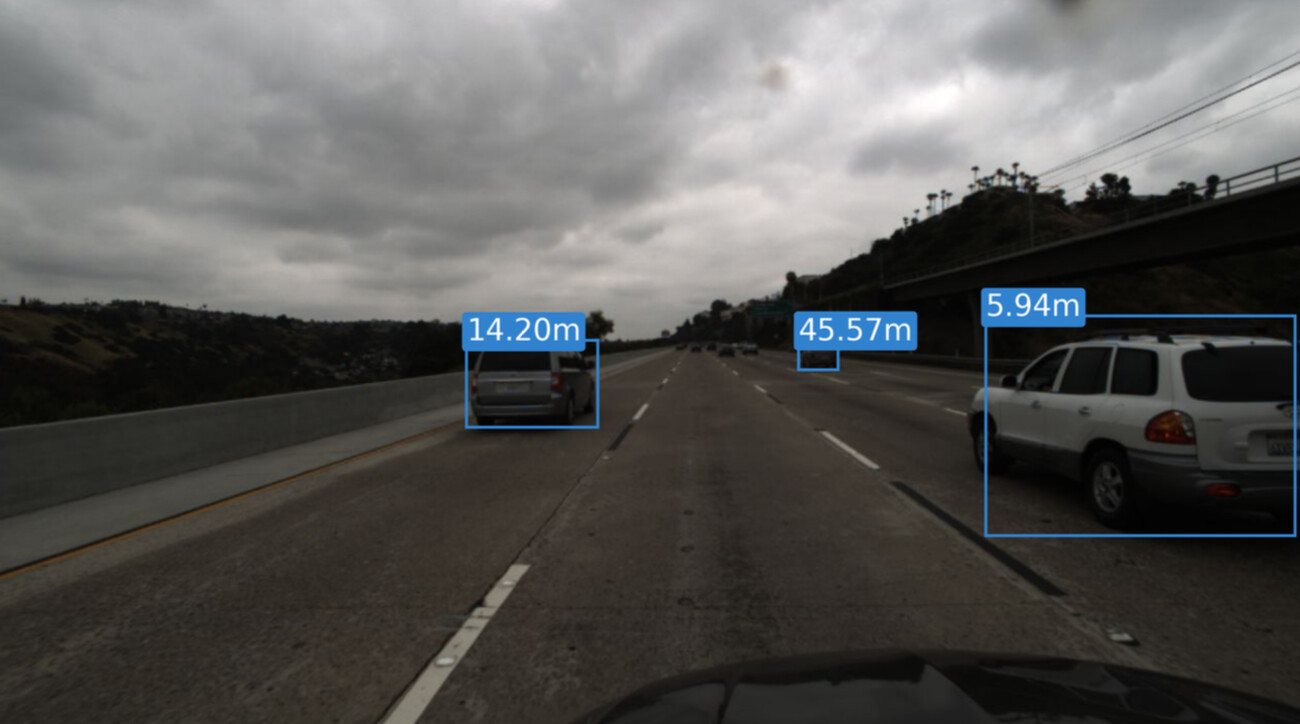
Final Problem: Find The Numbers
The final problem was by far the hardest one as it had an unusual train test split. The train dataset consisted of 24 images while the test set had over 10,000 images. Each image contained a random number of MNIST digits between 0 and 9 with random sizes in random positions. The task was to recognize all digits in the given images. The prediction for the following image could for example be 776186792825. The order of digits doesn't matter, so 277698718625 would also be a valid prediction.
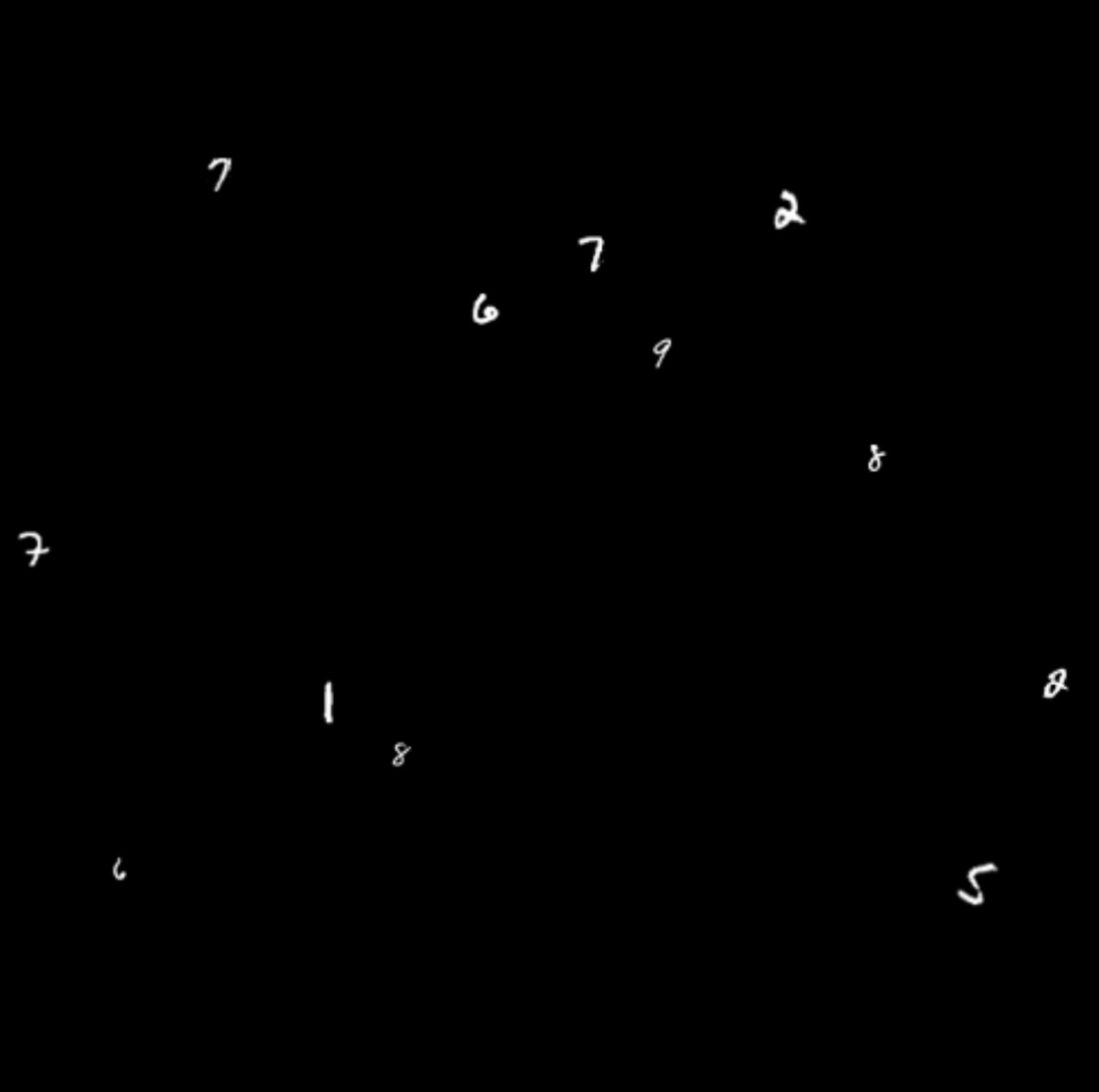
The first approach we tried was to use an OCR-tool like Python-tesseract to directly recognize the digits embedded in the image. After some preprocessing of the image (e.g. inverting the colors) we were able to classify some images, but the accuracy wasn't great.
We know that the images were taken from the MNIST dataset. As a lot of good models already exist for classifying MNIST digits, we decided to try cutting out the digits and classify each digit separately. We used several OpenCV functions to cut out the digits, scale them to the correct size, sharpen the images, and perform other preprocessing steps to make them look as similar as possible to the MNIST digits. We then trained a simple MNIST model and used it to classify each image in the test set. This approach worked much better than the previous OCR attempt.
Conclusion
Overall, the hackathon was an incredible experience and I am grateful to have had the opportunity to participate. I would like to thank the organizers of the hackathon for putting on such a great event, and to Maximilian for being an incredible teammate. I am excited to see what the future holds for us in the world of data science.
